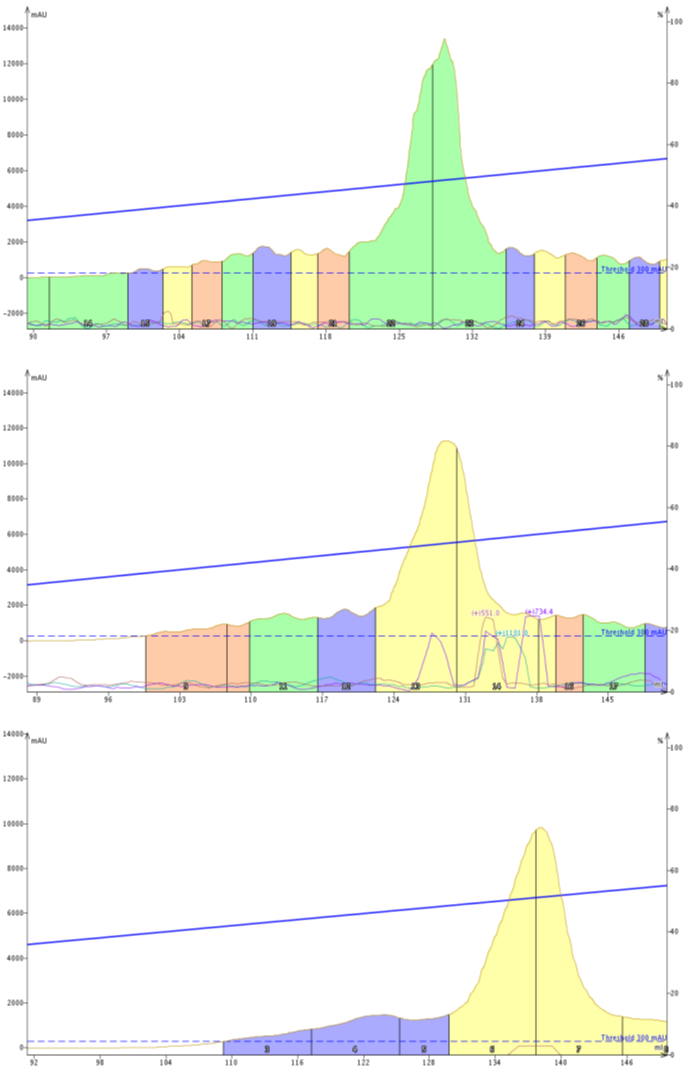I’ve recently worked with several peptide groups that are trying out flash purification with their peptides for the first time. And it never fails, every single interaction includes the question “what flow rate should I use for these cartridges?”
There is a lot of information available highlighting optimal flow rates for HPLC method development, but very little information for larger particle stationary phases. I personally have used a wide range of flow rates for my peptide purification with differing outcomes. So in today’s post I’d like to have a more thorough discussion about mobile phase flow rate and it’s impact on your chromatography.
Flow rate can affect resolution, efficiency, and importantly, purification time. Run time becomes a critical consideration when deciding to use flash chromatography as the purification technique. However, faster isn’t always better. Fast flow rates could reduce the opportunity for a peptide to interact with the stationary phase, potentially decreasing resolution. Too slow of a flow rate though can lead to significant peak broadening due to on-column diffusion.
I took inspiration for this post after several fruitful discussions with my colleague Bob Bickler, who has probably forgotten more about chromatography than I will ever know. Bob had done some nice work evaluating the impact of flow rate for several different sized stationary phase particles using a mixture of small molecules, but we all know peptides have their own ideas when it comes to chromatography.

Figure 1: Purification of 18A using a 20 to 70% linear gradient using flow rates of 12 (top), 25 (middle) or 50 mL/min (bottom). Despite equivalent sample loads, peak broadening is clearly evident, both in peak width and observed peak amplitude.
There are a couple differences between each purification. The first and most obvious is the relatively significant increase in retention observed with the fastest flow rate (retained 138 mL instead of ~129 mL). I would normally expect the peptide to elute earlier with faster flow rates as the it should be carried out of the cartridge more quickly once desorbed from the stationary phase during active partitioning. This provides some evidence to suggest that at higher pressures, the mobile phase plays a more active role in the interaction of peptides with the stationary phase, effectively driving the molecules into the pores and forcing the interaction. This could phenomenon could explain why we are seeing the higher retention with the faster flow rate.
The second thing you will notice is a decrease in the baseline fluctuations (waviness) with increasing flow rate. The regularity of the fluctuations suggest a systematic issue. In fact what we are observing is cavitation due to mixing of the acetonitrile and water throughout the gradient. When acetonitrile and water mix, the solution cools, expelling any entrapped air and forming bubbles. The cause small pressure fluctuations, which are detected by the UV detector. The cavitation can complicate post-purification fraction analysis, but I’ll discuss in the future some alternative ways to alleviate this problem.
If we delve a little deeper into the technical details for column performance, one thing becomes very clear. Increasing the flow rate causes peak broadening, Table 2. The effect is more subtle when comparing the 12 and 25 mL/min purifications, but becomes quite dramatic upon increasing the flow rate to 50 mL/min. Band broadening can lead to decreased resolution and compromised purity, particularly when closely eluting contaminants are involved.
| Flow rate (mL/min) | Retention volume (mL) | Peak width at half max (mL) | Theoretical plates per column | Theoretical plates per meter |
|---|---|---|---|---|
| 12 | 129.5 | 5 | 3,716 | 67,568 |
| 25 | 129 | 6 | 2,561 | 46,561 |
| 50 | 138 | 8 | 1,648 | 29,972 |
Table 2: Comparison of apparent cartridge efficiency using a linear gradient for peptide purification completed with different flow rates.
So the question becomes this: what are you willing to compromise? There are a few parameters you can readily change to improve your separation, including flow rate. Despite the peak broadening, I have achieved very high purity (>95%) for this relatively dirty crude peptide (27% crude purity) using this gradient and 50 mL/min. The purification requires about 6 minutes to complete, including equilibration and washing at the highest flow rate, compared to about 24 minutes for the slowest flow rate.
Would you like to learn even more about the utility of flash chromatography for peptide purification? Follow the link below to download our purification tips and tricks webinar.

 Organic Workflow
Organic Workflow Peptide Workflow
Peptide Workflow Scale-Up Flash Purification
Scale-Up Flash Purification  Sample Preparation
Sample Preparation Biomolecule Purification
Biomolecule Purification Oligo synthesis
Oligo synthesis Scavengers and Reagents
Scavengers and Reagents Service & Support
Service & Support Accessories & Spare parts
Accessories & Spare parts Investors
Investors Reports & News
Reports & News The Share
The Share Corporate Governance
Corporate Governance Calendar
Calendar Sustainability
Sustainability Our Offering
Our Offering Our History
Our History Our Locations
Our Locations Leadership
Leadership